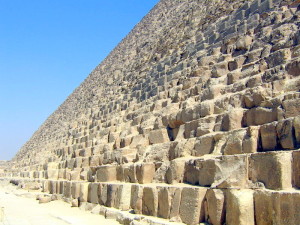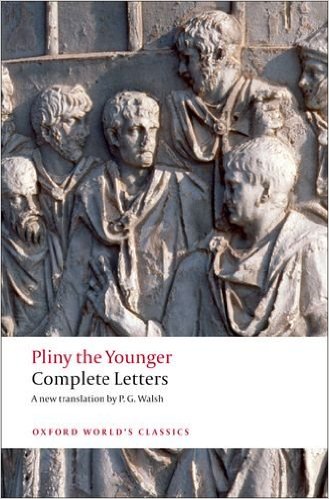Philitis, if we are to take the Herodotean account at face value [1], is one of the most notable examples of a man who would have been astonished to find his name preserved in the annals of history.
He was a common shepherd who pastured his flocks on the Giza Plateau at the time of the building of the Great Pyramid. This Herodotus writes he was told by the Memphis priests on his travels in Egypt. According to the modern chronology, this would place Philitis squarely in the 26th century BC during the reign of the pharaoh Khufu. Herodotus records how Khufu shut down all the temples and reduced the Egyptians to a state of general misery by compelling the people to labour as slaves for thirty years on his megalomaniacal building project. We even learn that Khufu sent his own daughter to work in a brothel when he ran short on money (see footnote 1). Khufu’s son Khafra proved no better after succeeding him on the throne. Khafra continued the oppressive policies instituted by his father, although he evidently carried them out with reduced vigour, since his pyramid is smaller in size. His tendency toward moderation, however, failed to placate the disgruntled Egyptian population. For Herodotus relates how contempt for Khufu and Khafra ran so high among the people that they could hardly bring themselves to utter their names, and went so far as to call the pyramids after lowly Philitis.
This constitutes the full extent of what is known of Philitis. And one might think, as I do, that it is extremely unlikely such a man ever existed in the first place. What seems more plausible to me is that the Philitis story ties together various loosely related historical people and events that came down to the Memphis priests in a garbled form. To make matters worse, Herodotus could have easily misconstrued the story as it was recounted to him by the priests, since he would have been communicating with them through an interpreter. That is assuming he even visited Egypt at all. In any event, continuing in speculation of this sort will quickly enter us into the realm of amateurish conjecture.
Contemporary scholars are regrettably silent on the historicity of Philitis in so far as I have been able to ascertain. I was, however, delighted to find that their 19th century counterparts virtually revelled in speculation.
As far back as 1830, Augustin Calmet held that Herodotus’ passage was properly understood to mean that the pyramids were built by nomadic herders from Philistia, better known today as Palestine [2]. What is more, Calmet argued on elaborate philological grounds that Philitis was no other than the Biblical patriarch Jacob, and the nomads, Israelites. Lord Lindsay, writing shortly thereafter in 1838, expressed a contrary view that Philitis was no Israelite at all, but was instead a name for the royal shepherds of Egypt, who migrated en masse after building the pyramids and became Israelites archenemies, the Philistines [3]. This theory must have been in circulation for some time already, because it was rejected two years prior by Samuel Sharpe on the basis of a careful examination of the historical and archaeological records [4]. Although it will be noted that George Rawlinson made an admirable attempt to reconcile these two conflicting views in a note on his 1858–60 translation of Herodotus [5]. He proposed that Philitis may indeed have been a Philistine shepherd-king who was
“so powerful and domineering, it may be traditions of his oppressions in that earlier age which, mixed up afterwards in the minds of later Egyptians with the evils inflicted on their country by the subsequent shepherds of better known dynasties, lent so much force to their religious hate of Shepherd times and that name.”
The subsequent shepherds of better known dynasties to which Rawlinson refers are the Hyksos: a mixed group of Asiatic people from Western Asia who overran the eastern Nile Delta in the 17th century BC. Different scholars who were presumably less preoccupied with the confirmation of biblical narratives looked to these invaders for explanations. C. Staniland Wake, for example, writes in 1882 that one M. Büdenger identified Philitis with Salatis, the first Hyksos king [6].
Returning to Rawlinson, my cursory investigation suggests that his compromise theory prevailed among the faithful until the Astronomer Royal of Scotland, Charles Piazzi Smyth, boldly proposed in 1874 that Philitis was the priest-king Melchizedek from the Book of Genesis [7]. According to Smyth, Melchizedek descended into Egypt and manipulated Khufu using sorcery into building the Great Pyramid before returning to his kingdom of Salem in the Holy Land. Charles Casey was so thoroughly convinced in this theory that by 1883 he was ready positively declare that Philitis was Melchizedek [8]. When astronomer Richard Proctor dropped the occultist trappings from Smyth’s theory, he found that Philitis had not been Melchizedek after all, but rather Abraham [9]. To top it all off, the Mormon apologist George Reynolds was indifferent to the true identity of Philitis so long as it was agreed that he was acquainted with the same “grand astronomical truths” that Joseph Smith alleged the Lord revealed to Abraham in a papyrus that he purports to have translated [10].
From this point on scholarly interest in Philitis seems to have died out. As we wait for the present generation of historians and archaeologists to weigh in on his historicity, we may find a passing contentment in reflecting on Herodotus’ account of an unremarkable shepherd whose memory has survived against all odds for over 4,500 years.
Footnotes
[1] This is odd because ancient Egypt did not have a money economy in the time of Khufu.
References
[1] The Histories by Herodotus; translated by Aubrey de Sélincourt and revised with introduction and notes by John Marincola (2003), Penguin Classics, Book II, pages 146-148.
[2] Dictionary of the Holy Bible by Augustin Calmet, Charles Taylor, and Edward Robinson (1830).
[3] Letters on Egypt, Edon, and The Holy Land by Lord Lindsay (1838).
[4] The Early History of Egypt from The Old Testament, Herodotus, and Manetho and the Heiroglyphical Inscriptions by Samuel Sharpe (1836).
[5] The History of Herodotus translated by George Rawlinson in collaboration with Sir Henry Rawlinson and Sir John Gardiner Wilkinson (1858–60).
[6] The Origin and Significance of the Great Pyramid by C. Staniland Wake (1882).
[7] Our Inheritance in the Great Pyramid: Including all the most Important Discoveries up to the Present Time by Charles Piazzi Smyth (1874).
[8] Philitis by Charles Casey (1883).
[9] The Great Pyramid: observatory, tomb, and temple by Richard A. Proctor (1883).
[10] The Book of Abraham: Its Authenticity Established as a Divine and Ancient Record: With Copious References to Ancient and Modern Authorities by George Reynolds (1879).


